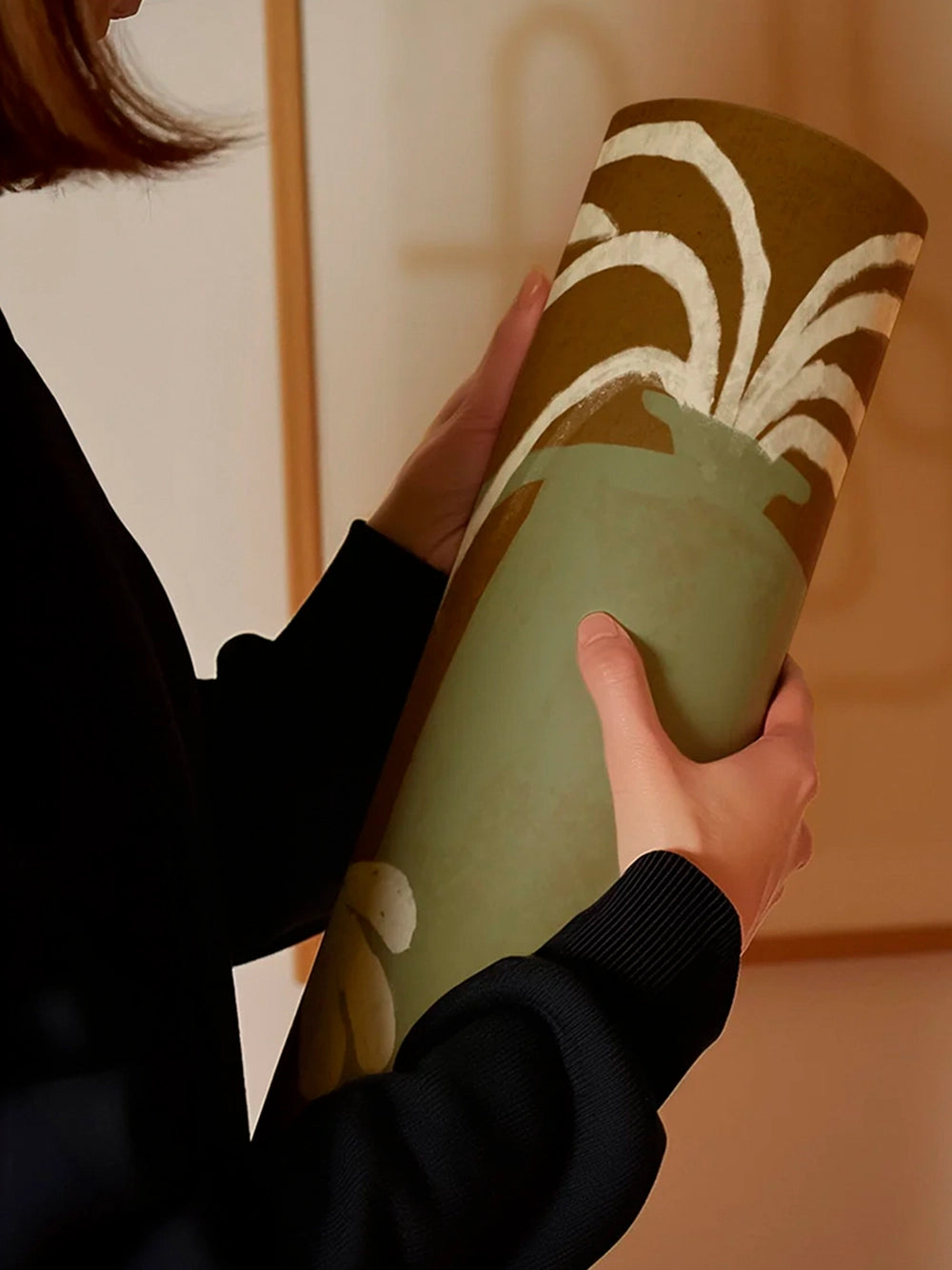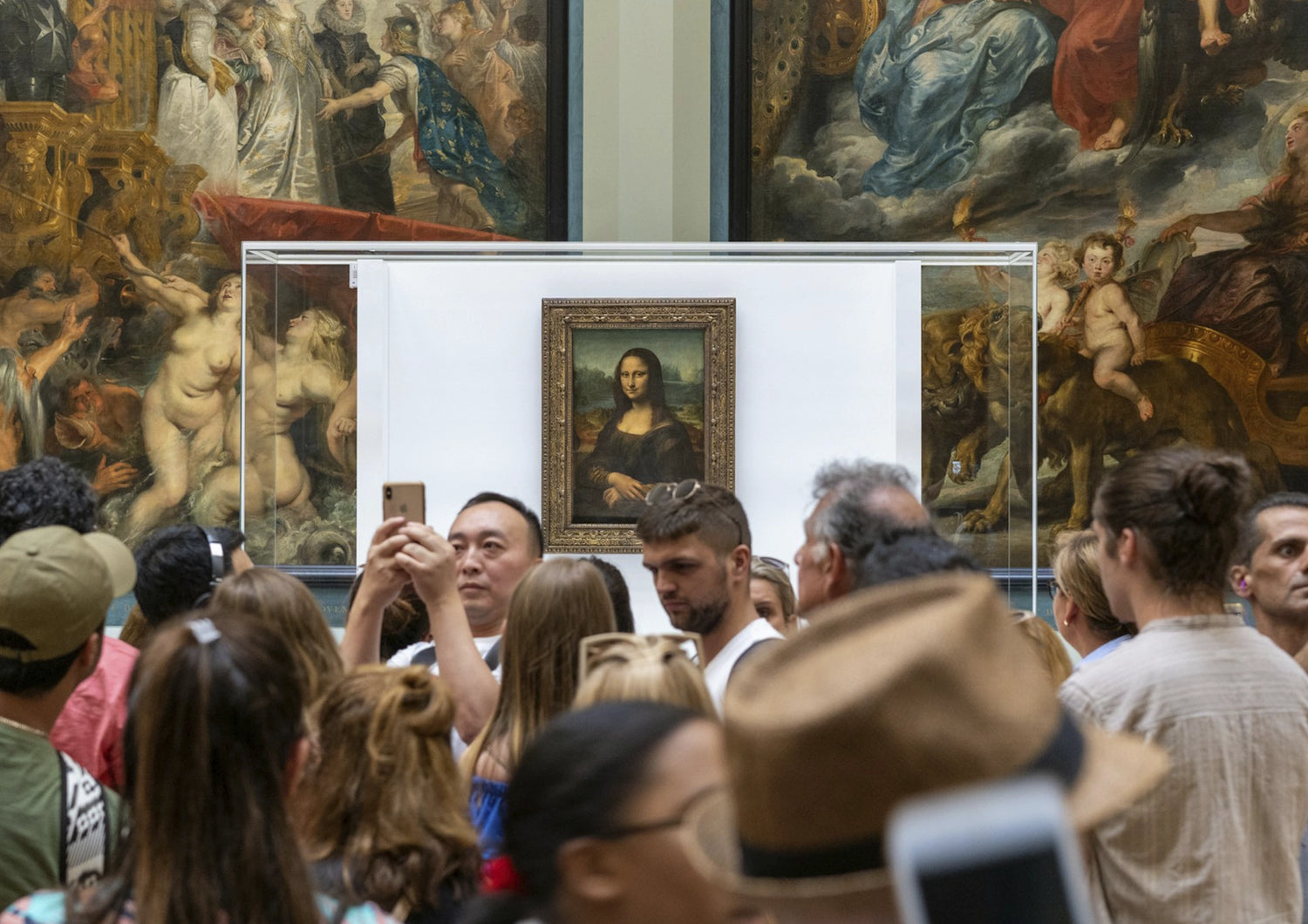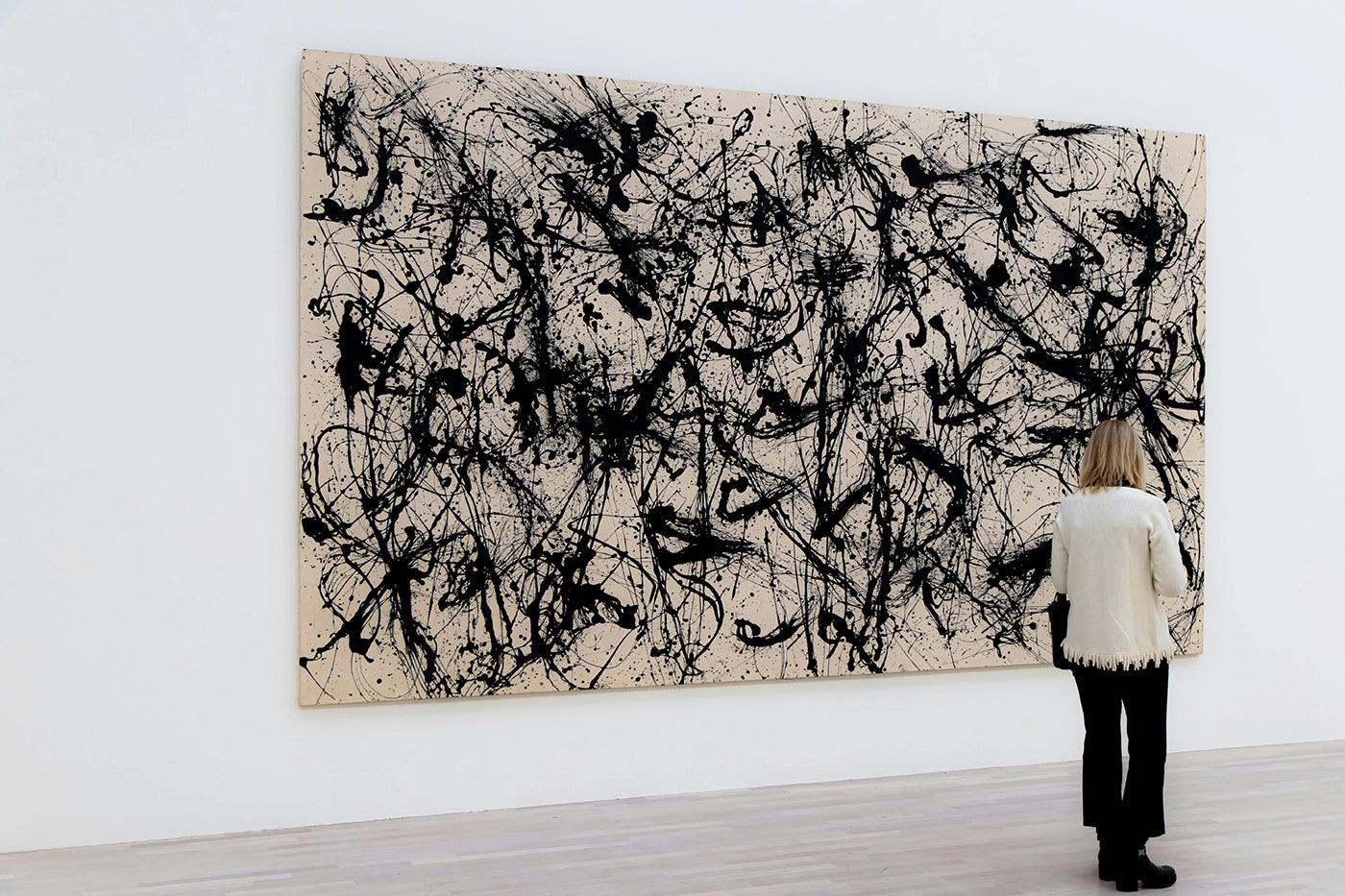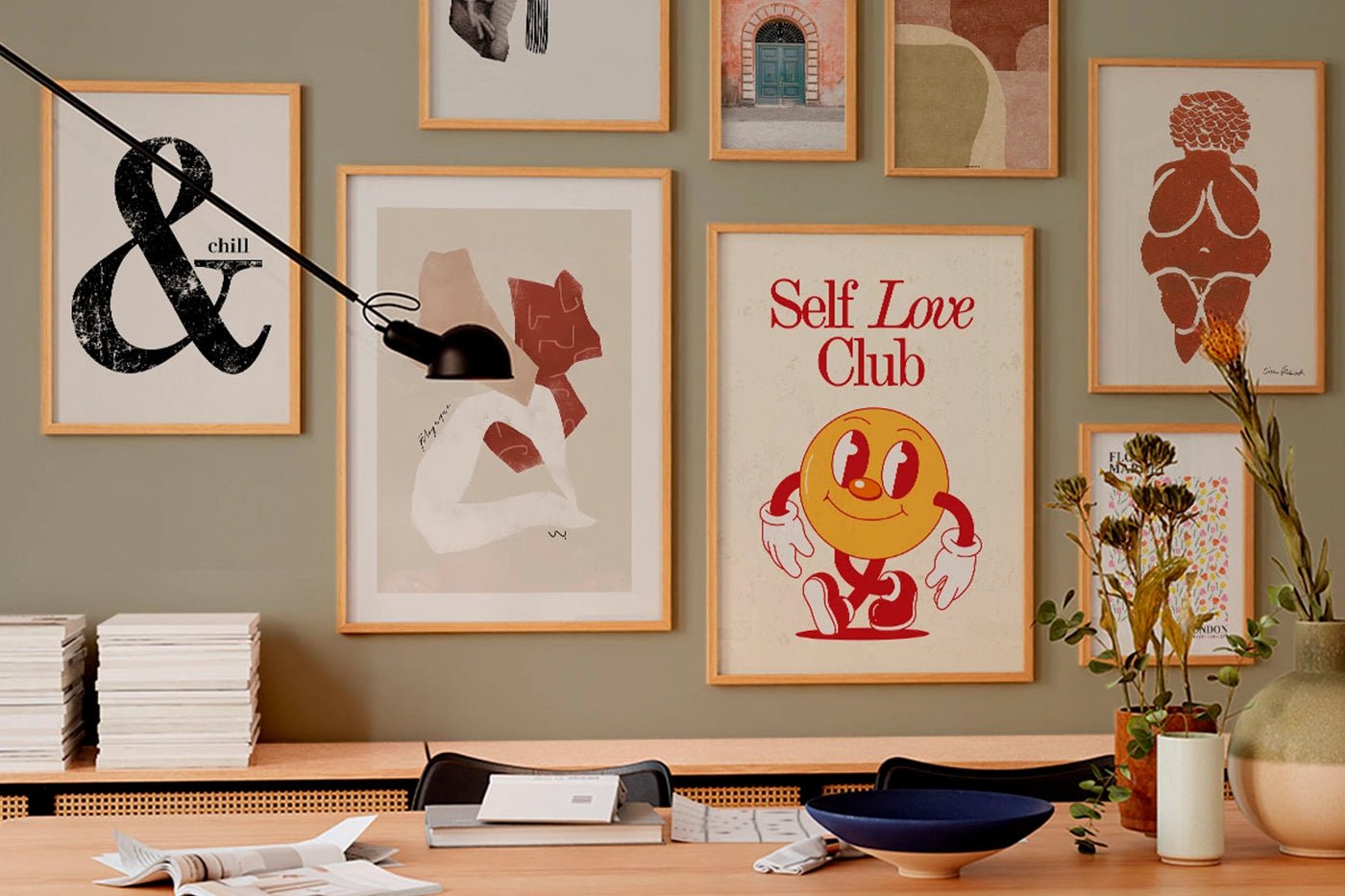There have been many art thefts throughout history, some of them involving very well-known pieces that were supposed to be insurmountable, but as things stand, they weren't. Today we bring you the 5 most important thefts in the History of Art... with a happy ending?
1. The easiest theft in art history: Da Vinci's Mona Lisa (1911)

The French ambassador, several Italian ministers and the director of the Louvre pose in Rome next to the Mona Lisa at the ceremony for the painting's return to France in December 1913.
Also known as the Mona Lisa, it is undoubtedly one of the most famous and well-known robberies in the history of art. And although it should have been one of the most difficult robberies to carry out, it was not. In this case, the thief was called Vincenzo Perrugia , a craftsman carpenter from Italy with few thieving skills but certainly effective. On the morning of August 21, 1911, Vincenzo entered the Louvre Museum in Paris and dressed in a white coat to pass himself off as a museum maintenance staff. He waited until the famous work was not being viewed as usual and took down the painting, then quickly hid it under his clothes.
Happy ending? 😀
The work appeared two years later after the police were alerted by the antique dealer Alfredo Geri, who received a letter from Peruggia demanding a reward of 500 thousand pounds.
2. The fastest robbery in the history of art: Munch's The Scream (1994)

Pal Enger after being arrested by the police
50 seconds, a wooden ladder and a thank you note to the police that read "Thank you for the poor security." That was all it took for the famous thief Pal Enger and his accomplice to break into the Munch Room at the National Gallery in Oslo in the early hours of February 12 and steal the famous painting. A robbery that Pal Enger later admitted he had been planning for 4 years, setting the ideal date to carry out his robbery on that fateful February 12, 1994, as the Winter Olympics were opening in Lillehammer , and all the police forces were assigned to cover security for the event.
Happy ending? 😀
Fortunately, the work of the famous Norwegian expressionist painter was recovered three months after the theft in a hotel in Aasgardstrand. Pal Enger was arrested and did not express any remorse, on the contrary, he was amused to tell how he had hidden the work between the planks of the table where his family ate and drank coffee.
3. The most expensive robbery in art history: Isabella Stewart Gardner Museum in Boston (1990)

Missing: The Storm on the Sea of Galilee (1633), Rembrandt van Rijn. Via The New York Times
Without a doubt one of the most mysterious and important robberies in the history of art, given the importance of the perpetrators and the number of works stolen. In total , 13 works of art by artists such as Rembrandt, Degas, Manet, Vermeer and Govaert Flinck, valued at more than 300 million euros .
In the early hours of March 18, 1990, two burglars disguised as police officers knocked on the door of the Isabella Stewart Gardner Museum in Boston, where they surprised a young security guard and convinced him that they had been alerted to suspicious noises inside the museum. Once inside and armed, they had all the time in the world to carry out their robbery. The next morning, the police found the museum's two security guards gagged in the basement.
Happy ending? ☹️
Unfortunately, nothing is known about the whereabouts of these 13 works. Federal authorities announced a reward of 9 million euros for providing clues, although this was withdrawn shortly after due to the lack of contributions. To this day, the FBI is still investigating without any clues the case of theft against the most important property in the USA. For its part, the Isabella Stewart Gardner Museum displays on its walls the empty frames of the paintings where these great stolen works once stood.
4. The heaviest robbery in the history of art: A Reclining figure by Henry Moore (2015)

Measuring 3.5 metres in length and weighing 2.1 tonnes , A Reclining Figure is the sculpture by artist Henry Moore that a gang of three thieves surprisingly managed to steal. How did they do it? Simple, with a crane and a truck.
This work by the British artist is made of bronze and is valued at more than 4.5 million euros . Located in one of the gardens of the artist's Foundation, the thieves did not hesitate to enter the premises during the early hours of the morning, even being recorded by security cameras, and deploying all their maneuvers to get hold of this precious work. Police sources indicate that the motive for the crime could have been caused solely by the value of the bronze.
Happy ending? ☹️
Although the artist's Foundation offered a substantial reward, there has been no response to date. Sadly, all clues point to the fact that the thieves decided to sell it to a foundry shortly after stealing it.
5. The most repeated theft in the history of art: The Ghent polyptych.

The Ghent Polyptych - Via Getty images
The masterpiece of Flemish painting created by the brothers Hubert and Jan van Eyck . This work known as the Adoration of the Mystic Lamb or Ghent Altarpiece is a polyptych made up of 12 panels painted in oil on both sides. A work of great importance since it represented the transition from medieval forms to the modern Nordic Renaissance. But this is not its only merit, it could even be said that it is more famous for being the most stolen work in history, stolen up to 13 times and coveted by historical figures of great relevance such as Napoleon or Adolf Hitler , among others.
Happy ending? 😀
Despite having been war booty three times, mutilated, lost, falsified and stolen on numerous occasions throughout history, this work rests in peace (never better said) in the church of St. John of Ghent (currently St. Bavo's Cathedral).

















Leave a comment
All comments are moderated before being published.
This site is protected by hCaptcha and the hCaptcha Privacy Policy and Terms of Service apply.